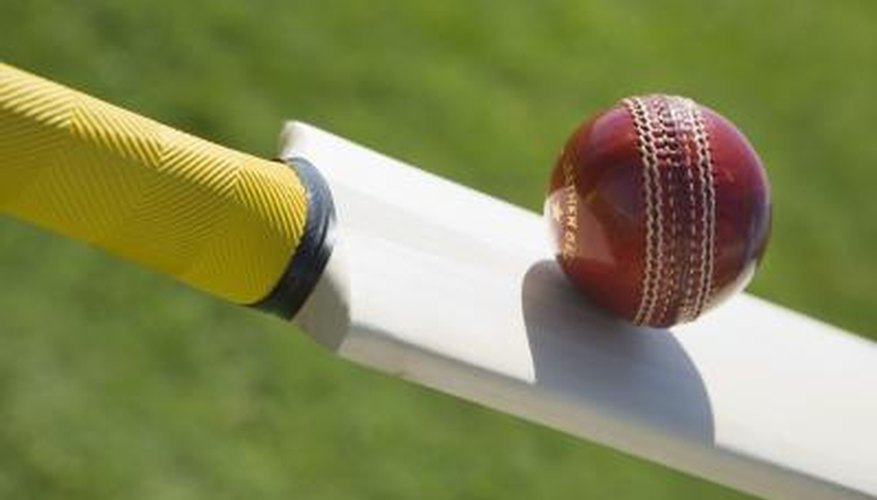Cricket umpires are tasked with officiating the match in adherence to the laws of the game. There are two umpires on the field of play -- one at the bowler's end and one at square leg. They are required to be impartial at all times and may not be replaced except under extenuating circumstances, such as illness or injury. Matches at the international level have a third umpire, who liaises with the on-field umpires in the case of a replay, and a match referee.
Pre-match Roles
Before the coin toss, the umpires will establish the hours of play. In agreement with the two team captains, they will decide which balls will be used during the match and determine the times and durations of intervals during the match. The umpires are required to inspect the wicket, the crease markings and the boundary lines, and ensure that all three are in compliance with the rules. They must also check that players' equipment -- batting helmets and wicketkeeping gloves, for example -- meets the standard requirements.
- Before the coin toss, the umpires will establish the hours of play.
- The umpires are required to inspect the wicket, the crease markings and the boundary lines, and ensure that all three are in compliance with the rules.
On-field Decisions
The umpire at the bowler's end is responsible for making LBW (leg before wicket) decisions and judging whether the batsman hit the ball or not when the opposing team appeals for a catch. It is also his duty to signal no balls, wides, byes, leg byes, boundaries and sixes. The square leg umpire is responsible for adjudicating on stumpings and run-outs. He may also indicate to the umpire at the bowler's end if the ball crosses the batsman above shoulder or head height. If the ball crosses above head height, the umpire at the bowler's end should signal a wide.
- The umpire at the bowler's end is responsible for making LBW (leg before wicket) decisions and judging whether the batsman hit the ball or not when the opposing team appeals for a catch.
- He may also indicate to the umpire at the bowler's end if the ball crosses the batsman above shoulder or head height.
It is the umpire's duty to intervene in the case of time wasting, ball tampering, dangerous bowling or damage to the pitch. Umpires must also deem when play is unsafe to continue such as in the case of bad weather or poor light. Umpires rotate positions after each over.
Third Umpire and Match Referee
The third umpire has the final say on decisions referred to the TV replay by the on-field umpires. These rulings include run-outs, stumpings, balls stopped on the boundary by a fielder and catches that the on-field umpires are unsure about. In 2008, the International Cricket Council introduced a referral system which allows teams to challenge decisions made by the on-field umpire. It is the third umpire's responsibility to watch the TV replay and advise the umpire on how to proceed on these decisions. The match referee is responsible for handling disciplinary matters. He has the power to fine a player for arguing with the umpires or expressing dissent.
- The third umpire has the final say on decisions referred to the TV replay by the on-field umpires.
